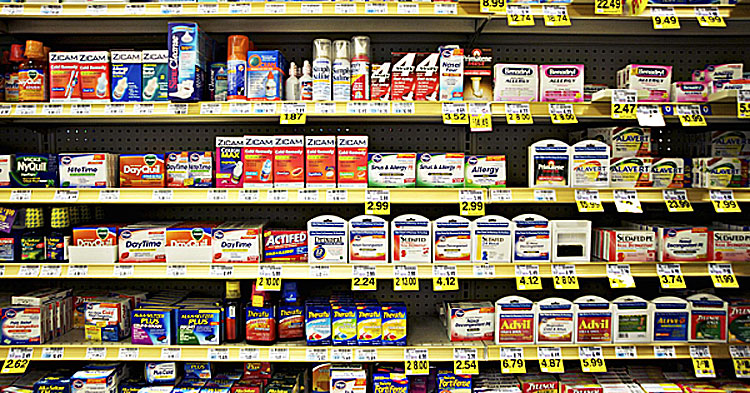By Ron Conte, Pharm.D.

A cough due to an upper respiratory infection as in a common cold may linger longer than any other symptom. Coughing is the body’s response to rid the respiratory system of any material obstructing normal airway flow, including excess mucous. A cough can be productive (rid the airway of mucous) or non-productive (not able to rid the airway of mucous). As mentioned in my first article, home remedies such as the use of steam or a cold mist vaporizer can be somewhat effective in converting a non-productive cough into a productive one.
Antitussives, on the other hand, are drugs that suppress the cough. Prescription cough medications containing hydrocodone or codeine, two narcotics, are used as cough suppressants. Products containing these agents are used to prevent a hacking cough during the day or at night to achieve better sleep. Side effects are numerous, but the most common is drowsiness. That is why narcotic antitussives are usually prescribed for use at bedtime. Narcotic containing cough products should be limited to adults only. More and more evidence suggests that the risk of narcotic use outweigh the benefit in children under twelve years of age.
I never really understood as a pharmacist the need for an expectorant and antitussive in the same product. It’s like the yin and yang of cough therapy. I would rather recommend an expectorant for day use if treating a non-productive cough and an antitussive for bedtime use to allow for sleep whether the cough is productive or not.
I have not addressed drug dosages nor frequency of use. For that information, please read the label of the drug product and/or consult with your pharmacist. Lastly, some people feel that if one pill works well, then two would be twice as effective. Caution: that may be true for some drugs for some patients at specific times. But it is just as true that side effects from taking higher than recommended doses of drugs may increase exponentially all the time.